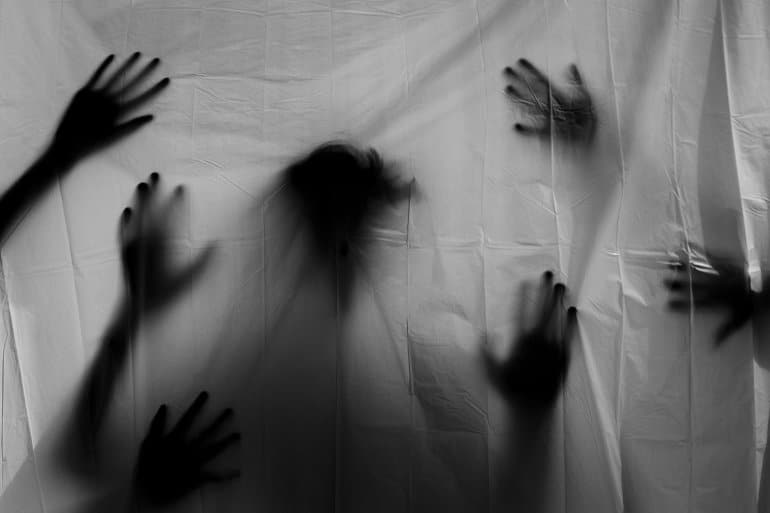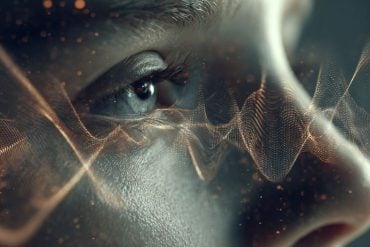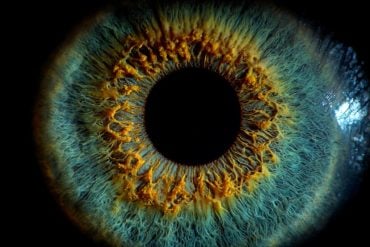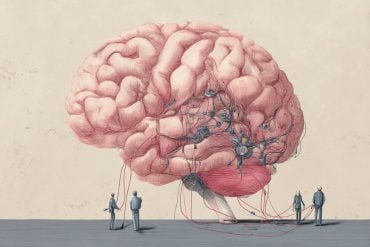Summary: Rehearsing positive versions of frequent nightmares before sleep and playing noises associated with positive daytime experiences during sleep helps reduce nightmare frequency, a new study reports.
Source: Cell Press
Nightmares, those fearful memories that re-emerge in dreams, can sometimes become regular occurrences, visiting people multiple times a week for months on end.
In therapy, dreamers may be coached to rehearse positive versions of their most frequent nightmares; however, in a study of such patients published October 27 in the journal Current Biology, researchers in Switzerland take this a step further.
They found that also playing a sound—one associated with a positive daytime experience—through a wireless headband during sleep may reduce nightmare frequency.
“There is a relationship between the types of emotions experienced in dreams and our emotional well-being,” says senior author Lampros Perogamvros, a psychiatrist at the Sleep Laboratory of the Geneva University Hospitals and the University of Geneva.
“Based on this observation, we had the idea that we could help people by manipulating emotions in their dreams. In this study, we show that we can reduce the number of emotionally very strong and very negative dreams in patients suffering from nightmares.”
Epidemiological studies have found that up to 4% of adults have chronic nightmares at any given moment, a condition often associated with waking up during the night and lower-quality sleep.
Patients are commonly prescribed imagery rehearsal therapy, which asks them to change the negative storyline toward a more positive ending and rehearse the rewritten dream scenario during the day. While effective, some cases are unresponsive.
To test whether sound exposure during sleep could boost success, Perogamvros and his colleagues looked at 36 patients, all receiving imagery rehearsal therapy.
Half of the group received no additional treatment, while the other half were required to create an association between a positive version of their nightmare and a sound heard during an imagination exercise.

This half of the group needed to practice the imagination exercise daily, and wear a headband that could send them the sound during REM sleep for 2 weeks. This is the sleep stage where nightmares mostly occur.
“We were positively surprised by how well the participants respected and tolerated the study procedures, for example performing imagery rehearsal therapy every day and wearing the sleep headband during the night,” says Perogamvros.
“We observed a fast decrease of nightmares, together with dreams becoming emotionally more positive. For us, researchers and clinicians, these findings are very promising both for the study of emotional processing during sleep and for the development of new therapies.”
Both groups experienced a decrease in nightmares per week, but the half that received the combination therapy had fewer nightmares post intervention, as well as 3 months later. They also experienced more joy in their dreams.
The results support that such combined therapy should be trialed on larger scales and with different kinds of populations to determine the extent and generalizability of its efficiency.
About this emotion and dreaming research news
Author: Press Office
Source: Cell Press
Contact: Press Office – Cell Press
Image: The image is in the public domain
Original Research: Open access.
“Enhancing imagery rehearsal therapy for nightmares with targeted memory reactivation” by Lampros Perogamvros et al. Current Biology
Abstract
Enhancing imagery rehearsal therapy for nightmares with targeted memory reactivation
Highlights
- Imagery rehearsal therapy (IRT) is a cognitive technique for reducing nightmares
- Targeted memory reactivation (TMR) aims to strengthen memories during sleep
- Replaying an IRT-associated sound during REM sleep with TMR boosts IRT effects
- TMR enhances IRT by reducing nightmares and increasing positive emotions in dreams
Summary
Nightmare disorder (ND) is characterized by dreams with strong negative emotions occurring during rapid eye movement (REM) sleep. ND is mainly treated by imagery rehearsal therapy (IRT), where the patients are asked to change the negative story line of their nightmare to a more positive one.
We here used targeted memory reactivation (TMR) during REM sleep to strengthen IRT-related memories and accelerate remission of ND. Thirty-six patients with ND were asked to perform an initial IRT session and, while they generated a positive outcome of their nightmare, half of the patients were exposed to a sound (TMR group), while no such pairing took place for the other half (control group).
During the next 2 weeks, all patients performed IRT every evening at home and were exposed to the sound during REM sleep with a wireless headband, which automatically detected sleep stages. The frequency of nightmares per week at 2 weeks was used as the primary outcome measure.
We found that the TMR group had less frequent nightmares and more positive dream emotions than the control group after 2 weeks of IRT and a sustained decrease of nightmares after 3 months.
By demonstrating the effectiveness of TMR during sleep to potentiate therapy, these results have clinical implications for the management of ND, with relevance to other psychiatric disorders too. Additionally, these findings show that TMR applied during REM sleep can modulate emotions in dreams.






